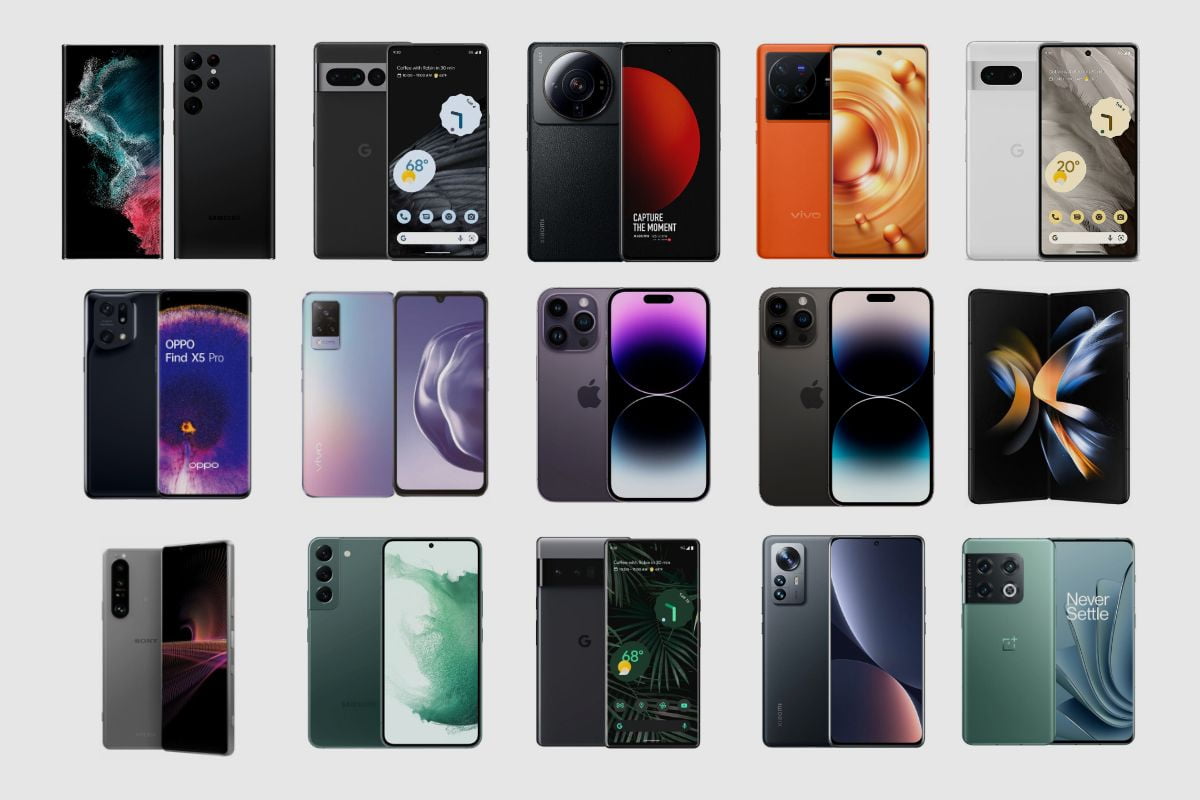Smartphone photography is the practice of taking and editing photos using a smartphone. Many smartphones have become increasingly popular for photography due to the fact that they can take clear pictures at any time and the high quality of their cameras.
Smartphone photography serves some importance, some of which are:
- Convenience: Smartphones are portable, so you can easily take photos and videos anytime and anywhere.
- Sharing: Sharing photos taken with a smartphone on social media or with friends and family via text or email is stress-free.
- Quality: Many smartphones have high-quality cameras that can produce images that are nearly as good as those taken with a traditional camera.
- Editing: Many smartphones come with editing software that allows you to enhance and improve your photos before sharing them.
- Cost-effective: Smartphones are generally less expensive than traditional cameras, making them more accessible to a wider range of people.
- Overview of the current market for smartphones for photography
- Best Smartphones for Photography
- 1. Samsung Galaxy S22 Ultra
- 2. Google Pixel 7 Pro
- 3. Xiaomi 12S Ultra
- 4. Vivo X80 Pro
- 5. Google Pixel 7
- 6. Oppo Find X5 Pro
- 7. Vivo V21
- 8. Apple iPhone 14 Pro
- 9. Apple iPhone 14 Pro Max
- 10. Samsung Galaxy Z Fold 4
- 11. Sony Xperia 1 III
- 12. Samsung Galaxy S22+
- 13. Google Pixel 6 Pro
- 14. OnePlus 10 Pro
- 15. Xiaomi 12 Pro
- Photography Basics
- Exploring the shooting Modes and Features Offered By Different Smartphones
- Accessories
- Recommendations
- Recommendations for the best smartphone for photography
- Conclusion
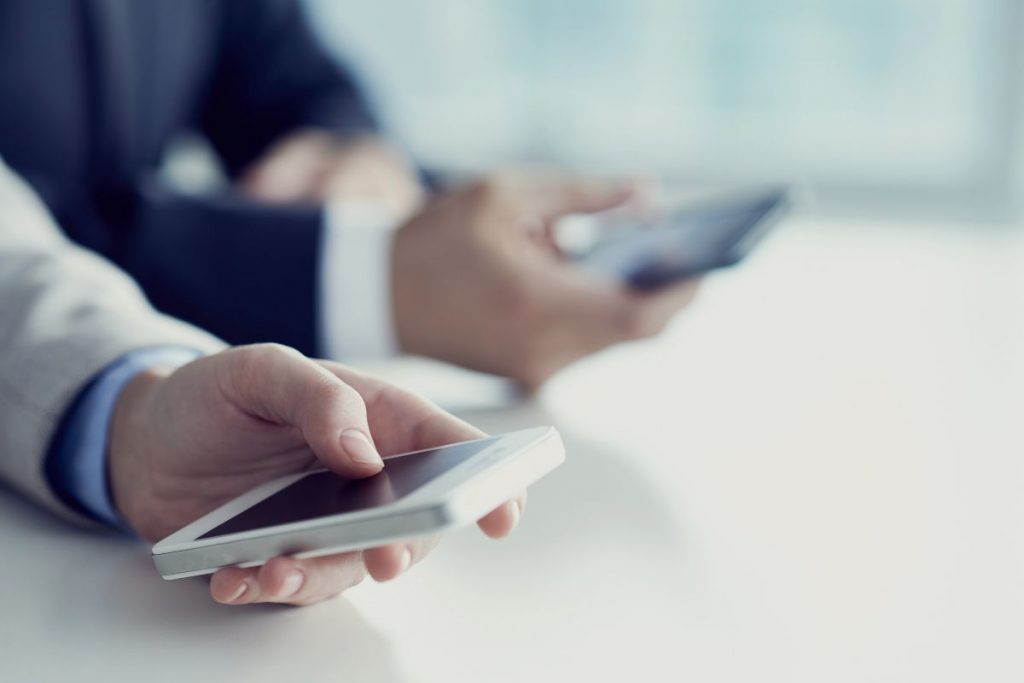
Overview of the current market for smartphones for photography
When selecting or making choices as regards which smartphone you would love to have for your smartphone photography, you have to consider certain factors. These factors may vary between smartphone users.
Here are a few factors to consider when looking for a smartphone:
- Operating system: Do you prefer iOS or Android?
- Display size and quality: Do you want a larger display with high resolution, or are you happy with a smaller display?
- Processor and performance: Do you need a more powerful processor to run multiple applications at the same time, or do you need a smaller processor?
- Camera: Do you take a lot of photos and videos and want a high-quality camera, or is a basic camera sufficient for your needs?
- Battery life: Do you need a smartphone with a long battery life, or are you okay with having to charge your phone more frequently?
- Storage: Do you need a lot of storage for apps, photos, and videos?
- Price: How much are you willing to spend on a smartphone?
Best Smartphones for Photography
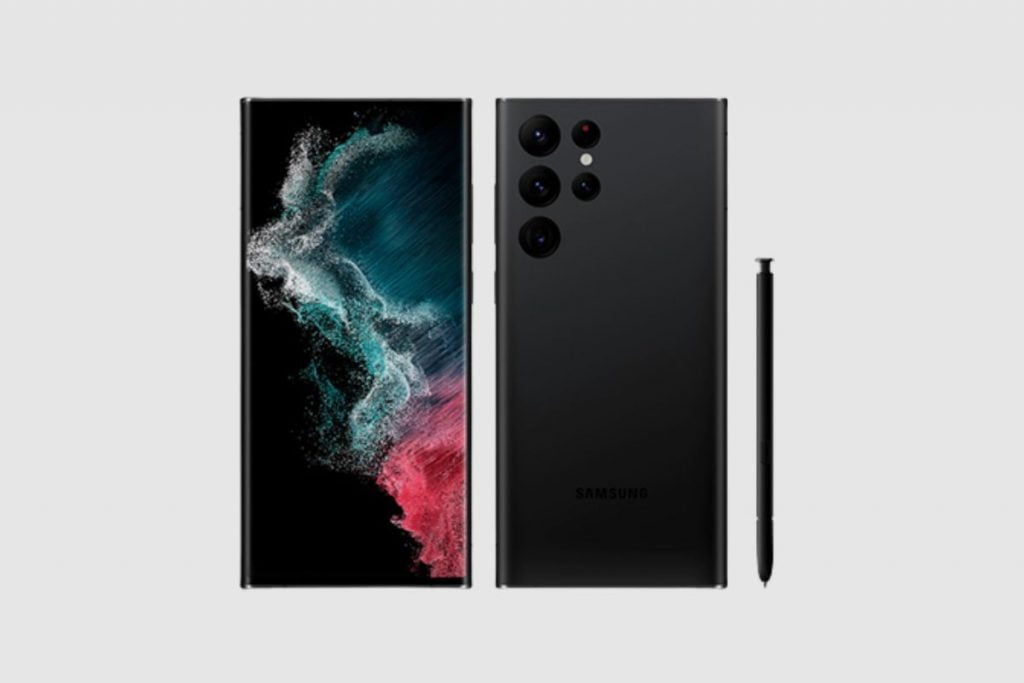
1. Samsung Galaxy S22 Ultra
The Samsung Galaxy S22 Ultra was launched with Android 12 (upgradable to v13). It has a 6.8″ Dynamic AMOLED 2x display, a Qualcomm SM8450 Snapdragon 8 Gen 1 (4 nm), Adreno 730 GPU, and a 120Hz refresh rate for smooth use. It also comes with a 1440 x 3088px screen resolution and a non-removable Li-Po 5000mAh.
Pros
- Improved S Pen implementation
- Impressive low-light photography
- Faster processor
Cons
- Very expensive
- No increase in battery size
- No MicroSD card expansion
Camera Specs
The S22 Ultra’s camera system is considered the best in versatility with its quad rear camera setup.
- 12MP Ultra Wide Camera
- Dual Pixel AF
- Pixel size: 1.4μm
- FOV: 120˚
- F.No (aperture): f/2.2
- 1/2.55″ image sensor size
- 108MP Wide-angle Camera
- PDAF, OIS
- Pixel size: 0.8μm (12MP 2.4μm)
- FOV: 85˚
- F.No (aperture): f/1.8
- 1/1.33″ image sensor size
- 10MP Telephoto Camera
- Dual Pixel AF
- Pixel size: 1.12μm
- FOV: 11˚
- F.No (aperture): f/4.9
- 1/3.52″ image sensor size
- 10x Optical Zoom
- 10MP Telephoto Camera
- Dual Pixel AF
- Pixel size: 1.12μm
- FOV: 36˚
- F.No (aperture): f/2.4
- 1/3.52″ image sensor size
- 3x Optical Zoom
Features: LED flash, auto-HDR, panorama
- Selfie Camera: 40MP wide
- PDAF
- Pixel size: 0.7μm (10MP 1.4μm)
- FOV: 80˚
- F.No (aperture): f/2.2
- 1/2.82″ image sensor size
Features: Dual video call, Auto-HDR
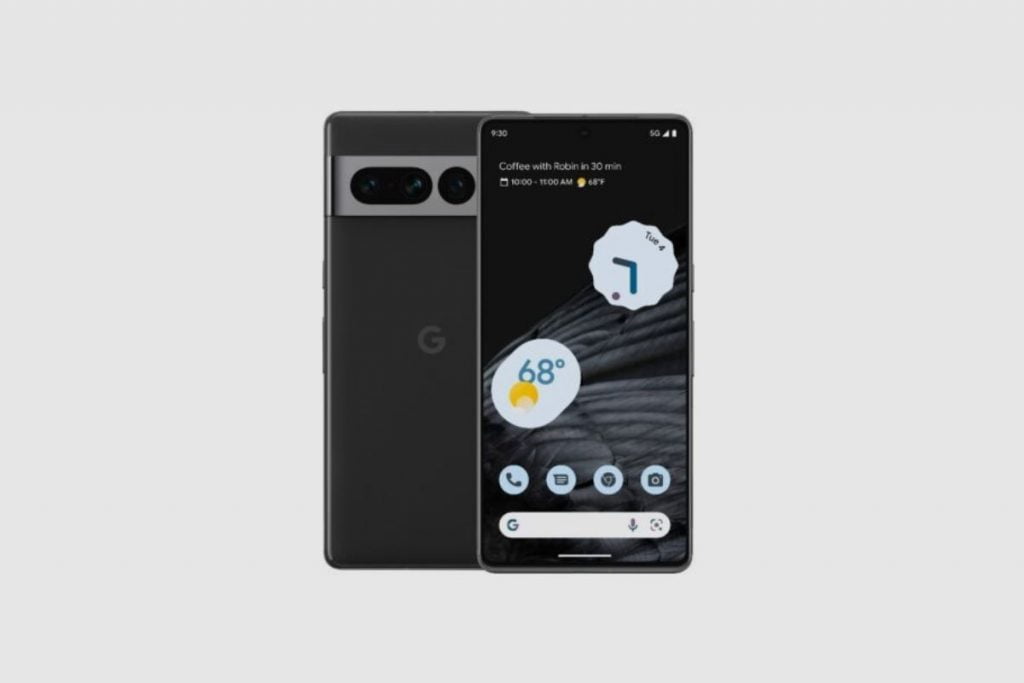
2. Google Pixel 7 Pro
Launched in October 2022, the Google Pixel 7 Pro boasts of the new Android 13, a Google Tensor G2 (5 nm) chipset, and a Mali-G710 MP7 GPU. It also comes with a 120Hz refresh rate, a 6.7″ LTPO AMOLED display, display brightness ranging from 1000 nits (min) – 1500 nits (max), a solid 1440 x 3120 PX screen resolution, and 512 PPI.
Pros
- Flatter sides
- Powerful software tools
- 120Hz refresh rate for the display
- Clean software experience
- 2x and 10x camera crop modes
Cons
- Shorter battery life than the Pixel 7
- Limited HDR sharing
Camera Specs
The Google Pixel 7 Pro is considered the best for daytime photos, thanks to its rear triple camera setup.
- 50 MP wide camera
- multi-directional PDAF
- Laser AF, OIS
- Pixel size: 1.2 µm
- F. No. (aperture): f/1.9
- 25 mm focal length
- 1/1.31″ image sensor size
- 48 MP telephoto camera
- multi-directional PDAF
- OIS
- 5x optical zoom
- Pixel size: 0.7 µm
- F. No (aperture): f/3.5
- 120 mm focal length
- 1/2.55″ image sensor size
- 12 MP ultrawide camera
- AF
- Pixel size: 1.25 µm
- F. No (aperture): f/2.2
- FOV: 126˚
- 1/2.9″ image sensor size
Features: Dual-LED flash, Pixel Shift, Auto-HDR, panorama
- Selfie Camera: 10.8 MP ultrawide camera
- Pixel size: 1.22 µm
- F.No (aperture): f/2.2
- 21 mm focal length
- 1/3.1″ image sensor size
Features: Auto-HDR, panorama

3. Xiaomi 12S Ultra
Xiaomi launched the 12S Ultra in July 2022, with the Android 12 OS that runs on a Qualcomm SM8475 Snapdragon 8+ Gen 1 (4 nm) chipset and an Adreno 730 GPU. It also comes with a 6.73” LTPO2 AMOLED display, 120Hz refresh rate, Dolby Vision, 1500 nits peak brightness, a 522 PPI, and a screen resolution of 1440 x 3200 PX.
Pros
- Premium Body Design
- 67W fast charging
- 5G Support
- 120Hz display refresh rate
- Superb camera performance
- IP68 dust/water-resistant
Cons
- No option to expand internal storage
- No 3.5 mm audio jack
Camera Specs
The Xiaomi 12S Ultra is considered the best for daytime photos because of its triple camera.
- 50.3 MP wide camera
- Dual Pixel PDAF
- Laser AF, OIS
- Pixel size: 1.6 µm
- F.No (aperture): f/1.9
- 23 mm focal length
- 1.0″ image sensor size
- 48 MP periscope telephoto camera
- PDAF, OIS
- 5x optical zoom
- Pixel size: 0.8 µm
- F.No (aperture): f/4.1
- 120 mm focal length
- 1/2.0″ image sensor size
- 48 MP ultrawide camera
- Dual-Pixel PDAF
- TOF 3D
- Pixel size: 0.8 µm
- F.No (aperture): f/2.2
- 13 mm focal length
- FOV: 128˚
- 1/2.0″ image sensor size
Features: Leica lenses, Dual-LED flash, HDR, panorama
- Selfie camera: 32 MP wide camera
- Pixel size: 0.7 µm
- F. No (aperture): f/2.4
- 25 mm focal length
Features: HDR, panorama

4. Vivo X80 Pro
Vivo X80 Pro was launched with Android 12 (upgradable to 13) and had a 6.78” LTPO AMOLED display, a Qualcomm SM8450 Snapdragon 8 Gen 1 (4 nm), Adreno 730 GPU, and a 120Hz refresh rate for smooth use. It also comes with a 1440 x 3088px screen resolution and a non-removable Li-Po 4700mAh.
Pros
- Fast processor
- Good for photography
- Stunning design
Cons
- Poor thermal performance
- Pre-installed bloatware
Camera Specs
Vivo X80 Pro is considered the best in nighttime or low light photos because of its rear quad camera setup.
- 50 MP wide camera
- PDAF
- Laser AF, OIS
- F.No (aperture): f/1.6
- 1/1.3″ image sensor size
- 8 MP periscope telephoto camera
- PDAF, OIS
- 5x optical zoom
- Pixel size: 1.0 µm
- F.No (aperture): f/3.4
- 1/4.4″ image sensor size
- 12 MP telephoto camera
- Dual Pixel PDAF, gimbals OIS
- 2x optical zoom
- F.No (aperture): f/1.9
- Pixel size: 1.22 µm
- 50 mm focal length
- 1/2.93″ image sensor size
- 48 MP ultrawide camera
- AF
- F.No (aperture): f/2.2
- FOV: 114˚
- 1/2.0″ image sensor size
Features: Zeiss optics, Zeiss T* lens coating, Pixel Shift, dual-LED dual-tone flash, HDR, panorama
- Selfie Camera: 32 MP wide camera
- Pixel size: 0.8 µm
- F.No (aperture): f/2.5
- 24 mm focal length
- 1/2.8″ image sensor size
Features: HDR

5. Google Pixel 7
Launched in October 2022, the Google Pixel 7 Pro boasts of the new Android 13, a Google Tensor G2 (5 nm) chipset, and a Mali-G710 MP7 GPU. It also comes with a 90Hz refresh rate, a 6.3″ LTPO AMOLED display, 1400 nits (max) display brightness, a solid 1080 x 2400px screen resolution, and 416ppi.
Pros
- Stellar camera performance
- More advanced Tensor chip
- Great display
- Latest Android 13 OS
Cons
- Poor thermal management during heavy usage
- 90Hz refresh rate
- No telephoto camera
Camera Specs
The Google Pixel 7 is considered best in portraits with its dual rear camera setup.
- 50 MP wide camera
- multi-directional PDAF
- Laser AF, OIS
- Pixel size: 1.2 µm
- F. No. (aperture): f/1.9
- 25 mm focal length
- 1/1.31″ image sensor size
- 12 MP ultrawide camera
- AF
- Pixel size: 1.25 µm
- F.No (aperture): f/2.2
- FOV: 114˚
- 1/2.9″ image sensor size
Features: Dual-LED flash, Pixel Shift, Auto-HDR, panorama
- Selfie Camera: 10.8 MP ultrawide camera
- Pixel size: 1.22 µm
- F.No (aperture): f/2.2,
- 21 mm focal length
- 1/3.1″ image sensor size
Features: Auto-HDR, panorama

6. Oppo Find X5 Pro
The Oppo Find X5 Pro was launched in March 2022 with an Android 12 OS (upgradable 13), which runs on a Qualcomm SM8450 Snapdragon 8 Gen 1 (4 nm), a Mali-G57 MC3 GPU, and comes with a 6.7″ LTPO2 AMOLED, a refresh rate of 120Hz, peak display brightness 1300 nits, a 525 PPI, and a screen resolution of 1440 x 3216px.
Pros
- High-performance processor
- 80W fast charge rate
- Fantastic software
- Superfast wired and wireless charging
Cons
- Only 2x optical zoom is available
- No micro SD card slot
- No audio jack
- Quite expensive
Camera Specs
The Oppo Find X5 Pro is considered the phone with the best ultrawide camera with its triple camera setup.
- 50 MP wide camera
- multi-directional PDAF, OIS (3-axis sensor-shift, 2-axis lens-shift)
- Pixel Size: 1.0 µm
- F.N0 (aperture): f/1.7
- 25 mm focal length
- 1/1.56″ image sensor size
- 13 MP telephoto camera
- PDAF
- 2x optical zoom
- F.No (aperture): f/2.4
- 52 mm focal length
- 1/3.4″ image sensor size
- 50 MP ultra-wide camera
- multi-directional PDAF
- Pixel Size: 1.0 µm
- f. No (aperture): f/2.2
- 15 mm focal length
- FOV: 110˚
- 1/1.56″ image sensor size
Features: Hasselblad colour calibration, LED flash, HDR, and panorama
- Selfie Camera: 32 MP wide camera
- Pixel Size: 0.8 µm
- F.No (aperture): f/2.4
- 21 mm focal length
- 1/2.74″ image sensor size
Features: Panorama

7. Vivo V21
The Oppo Find X5 Pro was launched in May 2021 with the Android 11 OS, which runs on a MediaTek MT6853 Dimensity 800U (7 nm) chipset and a Mali-G57 MC3 GPU. It also comes with a 6.4” AMOLED, a refresh rate of 90Hz, a peak display brightness of 500 nits, a 409 PPI, and a screen resolution of 1080 x 2400px.
Pros
- Powerful 3 GB/8 GB RAM is excellent for performing multiple tasks and playing heavy games.
- 6.4-inch HD AMOLED immersive display gives a cinematic viewing experience
- Excellent triple camera setup, which is good for lowlight photos.
Cons
- No stereo speakers or 3.5 mm jack
- High refresh rate handling needs some work; most games only run at 60Hz
Camera Specs
The Vivo V21 is considered the best selfie smartphone with its triple rear camera setup.
- 64 MP wide camera
- PDAF, OIS
- Pixel size: 0.8 µm
- F.No (aperture): f/1.8
- 26 mm focal length
- 1/1.72″ image sensor size
- 8 MP ultrawide camera
- Pixel size: 1.12 µm
- F.No (aperture): f/2.2
- FOV: 120˚
- 16 mm focal length
- 1/4″ image sensor size
- 2 MP macro camera
- F.No (aperture): f/2.4
Features: LED flash, HDR, panorama
- Selfie camera: 44 MP wide camera
- AF, OIS
- F.No (aperture): f/2.0
Features: Dual-LED flash, HDR
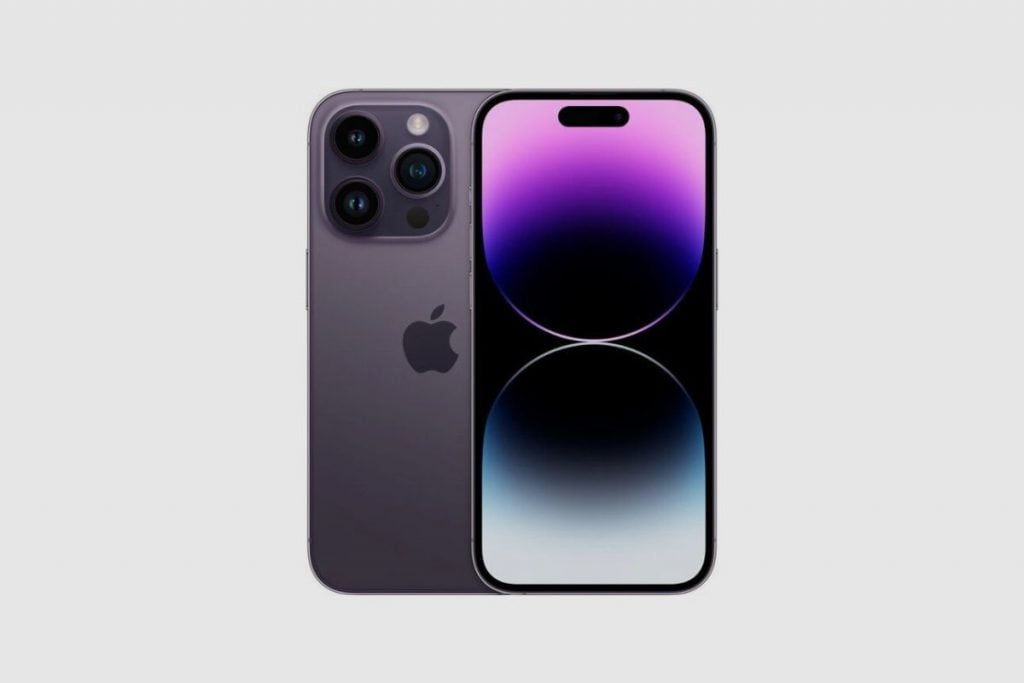
8. Apple iPhone 14 Pro
The iPhone 14 Pro was launched in September 2022 with the iOS 16 (upgradable to iOS 16.2) that runs on an Apple A15 Bionic (5 nm) chipset and Apple GPU (5-core graphics). It also comes with display features which include a 6.1″ Super Retina XDR OLED display, 1200 nits (peak brightness), 1170 x 2532px screen resolution, 19.5:9 aspect ratio, and a 460 PPI density.
Pros
- Smooth ProMotion display technology
- Great camera setup
- Support IP68 dust/water resistance.
- Protected by scratch-resistant ceramic glass with an oleophobic coating.
- MagSafe wireless charging 15W support.
- Support 7.5W Qi magnetic fast-wireless charging.
Cons
- Customisation is limited on iOS 16.
- No micro SD card slot.
- Fingerprint sensor not available.
- No reverse charging support.
Camera Specs
The iPhone 14 Pro is considered the best in video recording with its dual rear camera setup.
- 12 MP wide camera
- Dual pixel PDAF, sensor-shift OIS
- Pixel size: 1.9 µm
- F.No (aperture): f/1.5
- 26 mm focal length
- 1/1.7″ image sensor size
- 12 MP ultrawide camera
- F.No (aperture): f/2.4
- 13 mm focal length
- FOV: 120˚
Features: Dual-LED dual-tone flash, HDR (photo/panorama)
- Selfie Camera: 12 MP wide camera
- PDAF
- SL 3D, (depth/biometrics sensor)
- F.No (aperture): f/1.9
- 23 mm focal length
- 1/3.6″ image sensor size
Features: HDR, Cinematic mode
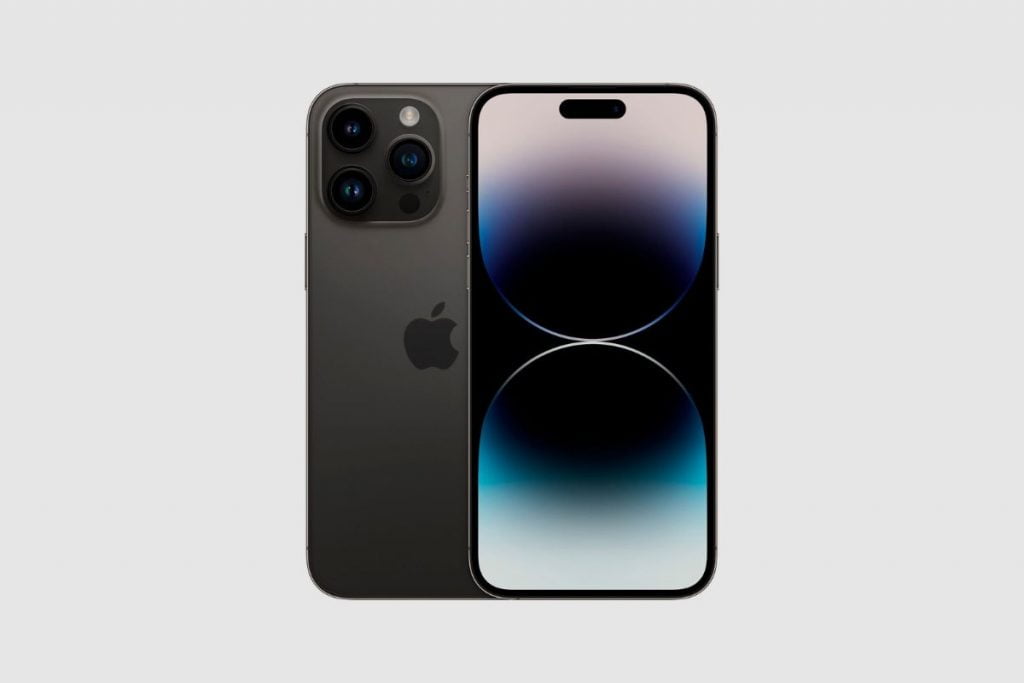
9. Apple iPhone 14 Pro Max
The iPhone 14 Pro Max was launched in September 2022 with the iOS 16 (upgradable to iOS 16.2) that runs on an Apple A16 Bionic (4 nm) chipset and Apple GPU (5-core graphics). It also comes with display features which include a 6.7″ LTPO Super Retina XDR OLED display, 120Hz refresh rate, 2000 nits (peak brightness), 460 PPI, and a screen resolution of 1290 x 2796px.
Pros
- Amazing cameras
- Beautiful display
- Always-on display
Cons
- No SIM tray
- Still 3x optical zoom
Camera Specs
The iPhone 14 Pro Max is considered the best for video recording with its triple rear camera setup.
- 48 MP wide camera
- Dual pixel PDAF, sensor-shift OIS
- Pixel size: 1.22 µm
- F.No (aperture): f/1.8
- 24 mm focal length
- 1/1.28″ image sensor size
- 12 MP telephoto camera
- PDAF, OIS
- F.No (aperture): f/2.8
- 77 mm focal length
- 1/3.5″ image sensor size
- 3x optical zoom
- 12 MP ultrawide
- Dual Pixel PDAF
- TOF 3D LiDAR scanner (depth)
- Pixel size: 1.4 µm
- F.No (aperture): f/2.2
- 13 mm focal length
- FOV: 120˚
- 1/2.55″ image sensor size
Features: Dual-LED dual-tone flash, HDR (photo/panorama)
- Selfie camera: 12 MP wide camera
- PDAF, OIS
- F.No (aperture): f/1.9
- 23 mm focal length
- 1/3.6″ image sensor size
Features: HDR, Cinematic mode

10. Samsung Galaxy Z Fold 4
The Samsung Galaxy Z Fold 4 was launched in August 2022 and came with a massive 7.6″ Foldable Dynamic AMOLED 2x, a refresh rate of 120Hz, 1200 nits peak brightness, a 373 PPI, and a screen resolution of 1812 x 2176px. It also operates with Android 12 (upgradable to version 13), which runs on a Qualcomm SM8475 Snapdragon 8+ Gen 1 (4 nm) and an Adreno 730 GPU.
Pros
- Decent design & IPX8 waterproof
- Excellent displays
- Useful multitasking features
- Clean performance
Cons
- No silo for S Pen
- Quite expensive
- Heavy and bulky
- 25W fast charging rate
Camera Specs
The Samsung Galaxy Z Fold 4 has a triple rear camera setup.
- 50 MP wide camera
- Dual Pixel PDAF, OIS
- Pixel size: 1.0 µm
- F.No (aperture): f/1.8
- 23 mm focal length
- 10 MP telephoto camera
- PDAF, OIS
- 3x optical zoom
- Pixel size: 1.0 µm
- F.No (aperture): f/2.4
- 66 mm focal length
- 12 MP ultrawide camera
- Pixel size: 1.12 µm
- F.No (aperture): f/2.2
- FOV: 123˚,
- 12 mm focal length
Features: LED flash, HDR, panorama
- Selfie camera: 4 MP wide camera
- Under display
- Pixel size: 2.0 µm
- F.No (aperture): f/1.8
- 26 mm focal length
- Cover camera: 10 MP wide camera
- Pixel size: 1.22µm
- F. No (aperture): f/2.2
- 24mm focal length
- 1/3″ image sensor size
Features: HDR
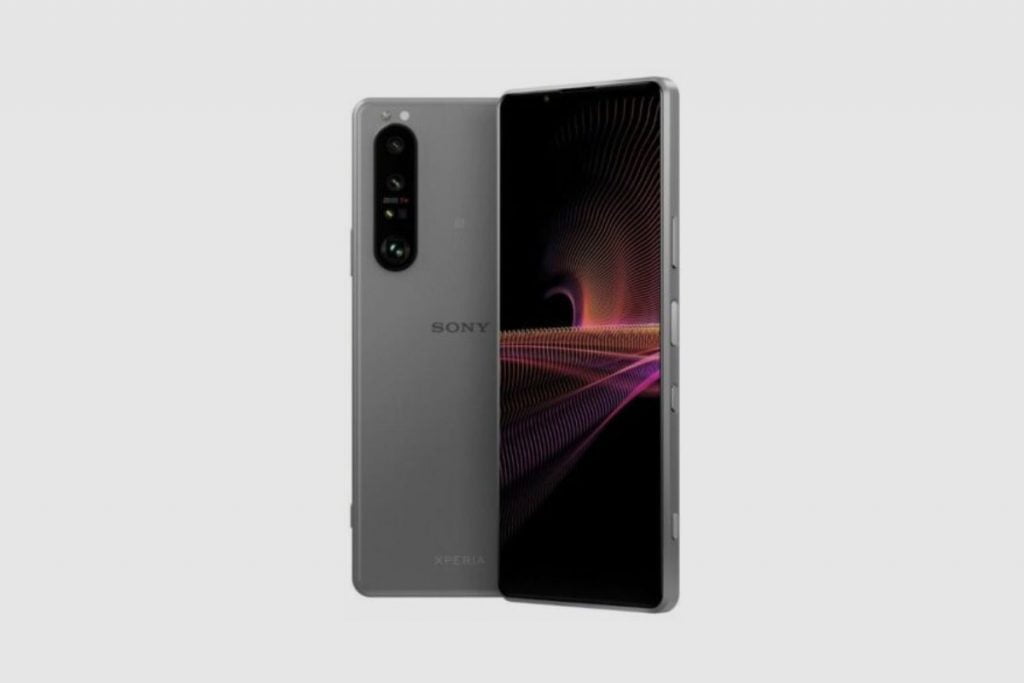
11. Sony Xperia 1 III
Released in August 2021, Sony Xperia 1 III comes with a 6.5″ OLED display with Android 11 (upgradable) and runs on a Qualcomm SM8350 Snapdragon 888 5G (5 nm) chipset and an Adreno 660 GPU. It boasts a 1644 x 3840 PX screen resolution and 643 PPI for a smooth display.
Pros
- Fast hardware and a nice screen
- Good and versatile
- Neat design
Cons
- Not the best battery life
- Quite expensive
- The updated policy isn’t great
Camera Specs
The Sony Xperia 1 III has a triple rear camera setup.
- 12 MP wide camera
- Dual Pixel PDAF, OIS
- F. No (aperture): f/1.7
- 24 mm focal length
- 1/1.7″ image sensor size
- Pixel size: 1.8 µm
- 12 MP telephoto camera
- 3x/4.4x optical zoom, OIS
- Dual Pixel PDAF
- F.No (aperture): f/2.3
- 70 mm focal length
- 1/2.9″ image sensor size
- 12 MP ultrawide camera
- Dual Pixel PDAF
- 0.3 MP, TOF 3D
- F.No (aperture); f/2.2
- FOV: 124˚
- 16 mm focal length
- 1/2.6″ image sensor size
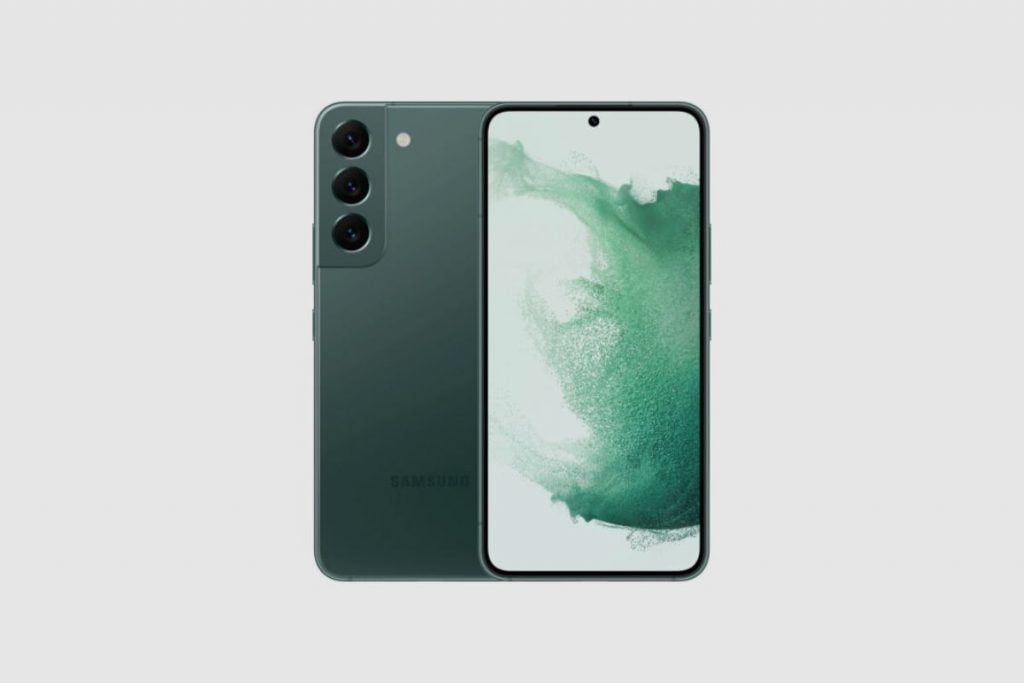
12. Samsung Galaxy S22+
The display of this phone presents a 6.6″ Dynamic AMOLED 2x display, 120Hz refresh rate, and a 1750 nits peak brightness. It comes with a 1080 x 2340 PX screen resolution, 393 PPI, and Android 12 (upgradable), which runs on a Qualcomm SM8450 Snapdragon 8 Gen 1 (4 nm) chipset, and an Adreno 730 GPU. It was launched in February 2022.
Pros
- Cutting-edge CPU
- Fast 45W charging
- Sharp display
Cons
- No external memory for microSD
- No 3.5 mm audio jack
Camera Specs
The Samsung Galaxy S22+ has a dynamic triple rear camera setup.
- 50 MP wide camera
- Dual Pixel PDAF, OIS
- Pixel size: 1.0 µm
- F.No (aperture): f/1.8
- 23 mm focal length
- 1/1.56″ image sensor size
- 10 MP telephoto camera
- PDAF, OIS
- 3x optical zoom
- Pixel size 1.0 µm
- F.No (aperture): f/2.4
- 70 mm focal length
- 1/3.94″ image sensor size
- 12 MP ultrawide camera
- Pixel size: 1.4 µm
- F. No (aperture): f/2.2
- 13 mm, focal length
- FOV: 120˚
- 1/2.55″ image sensor size
Features: LED flash, auto-HDR, panorama
- Selfie camera: 10 MP wide camera
- Dual Pixel PDAF
- F. No (aperture): f/2.2
- Pixel size: 1.22 µm
- 26 mm focal length
- 1/3.24″ image sensor size
Features: Dual video call, Auto-HDR

13. Google Pixel 6 Pro
The Google Pixel 6 Pro was launched in October 2021. Its design and build comprise a lightweight 210g (7.41oz), a 6.7″ LTPO AMOLED display, a 120Hz refresh rate, a 19.5:9 aspect ratio, 512 PPI, and a 1440 x 3120 PX screen resolution. It operates on Android 12 (upgradable to 13), which runs on a Google Tensor (5 nm) chipset and a Mali-G78 MP20 GPU.
Pros
- Dust and water-resistant
- It runs on Android 12 OS
- Wireless charging and reverse charging
- Quite decent performance of the 5 nm Google Tensor chipset
Cons
- Lacks UI support
- 8k video recording not supported
- MicroSD card is not supported
Camera Specs
The Google Pixel 6 Pro has a unique triple rear camera setup.
- 50 MP wide camera
- Dual Pixel PDAF
- Laser AF, OIS
- Pixel size: 1.2 µm
- F.No (aperture): f/1.9
- 25 mm focal length
- 1/1.31″ image sensor size
- 48 MP telephoto camera
- PDAF, OIS
- 4x optical zoom
- Pixel size: 0.8 µm
- F.No (aperture): f/3.5
- 104 mm focal length
- 1/2″ image sensor size
- 12 MP ultrawide camera
- Pixel size: 1.25 µm
- F.No (aperture): f/2.2
- 17 mm focal length
- FOV: 114˚
Features: Dual-LED flash, Pixel Shift, Auto-HDR, panorama
- Selfie camera: 11.1 MP ultrawide camera
- Pixel size: 1.22 µm
- F.No (aperture): f/2.2
- 20 mm focal length
Features: Auto-HDR, panorama
14. OnePlus 10 Pro
OnePlus 10 Pro was launched in January 2022, weighs 201g, and comes with an Android 12 (upgradable to 13). It runs on a Qualcomm SM8450 Snapdragon 8 Gen 1 (4 nm) chipset, an Adreno 730 GPU, and a 6.7″ LTPO2 Fluid AMOLED display. It also comes with a refresh rate of 120Hz, 1440 x 3216px screen resolution, and 525 PPI.
Pros
- Sleek AMOLED 120Hz screen
- Fast fingerprint and face unlock
- Impressive fast charging
- Offers the latest hardware
- Sleek build
Cons
- Telephoto camera is average
- No IP certification
- No 5G on AT&T
Camera Specs
The OnePlus 10 Pro comes with a commendable triple rear camera setup.
- 48 MP wide camera
- multi-directional PDAF
- Laser AF, OIS
- Pixel size: 1.12 µm
- F.No (aperture): f/1.8
- 23 mm focal length
- 1/1.43″ image sensor size
- 8 MP telephoto camera
- PDAF, OIS
- 3x optical zoom
- Pixel size: 1.0 µm
- F. No (aperture): f/2.4
- 77 mm focal length
- 50 MP ultra-wide camera
- Pixel size: 0.64 µm
- F.No (aperture): f/2.2
- 14 mm focal length
- FOV: 150˚
- 1/2.76″ image sensor size
Features: Hasselblad Color Calibration, Dual-LED dual-tone flash, HDR, panorama
- Selfie camera: 32 MP wide camera
- Pixel size: 0.8 µm
- F.No (aperture): f/2.2
- 1/2.74″ image sensor size
Features: Auto-HDR.
Related post to read: OnePlus 10 Pro Review.
15. Xiaomi 12 Pro
Xiaomi 12 Pro comes with an Android 12 OS on a Qualcomm SM8450 Snapdragon 8 Gen 1 (4 nm) chipset, an Adreno 730 GPU, and a 6.73″ LPTO AMOLED display which supports a 120Hz refresh rate. It also comes with a 1440 x 3200 px screen resolution, 1500 nits peak brightness, and 521 PPI.
Pros
- 5G and NFC enabled
- Improved camera performance
- Excellent battery life
- 120W fast charging rate
- OS upgradable to Android 13
Cons
- Supports only 2x optical zoom
- No support for micro SD card
Camera Specs
The Xiaomi 12 Pro has a lot of features and comes with an interesting triple-camera setup.
- 50 MP wide camera
- PDAF
- 2x optical zoom
- Pixel size: 1.22 µm
- F.No (aperture): f/1.9
- 24 mm focal length
- 1/1.28″ image sensor size
- 50 MP telephoto camera
- PDAF
- 2x optical zoom
- F.No (aperture): f/1.9
- 48 mm focal length
- 50 MP ultra-wide camera
- F.No (aperture): f/2.2
- FOV: 115˚
Features: Dual-LED dual-tone flash, HDR, panorama
- Selfie camera: 32 MP wide camera
- Pixel size: 0.7 µm
- F.No (aperture): f/2.5
- 26 mm focal length
Features: HDR, panorama
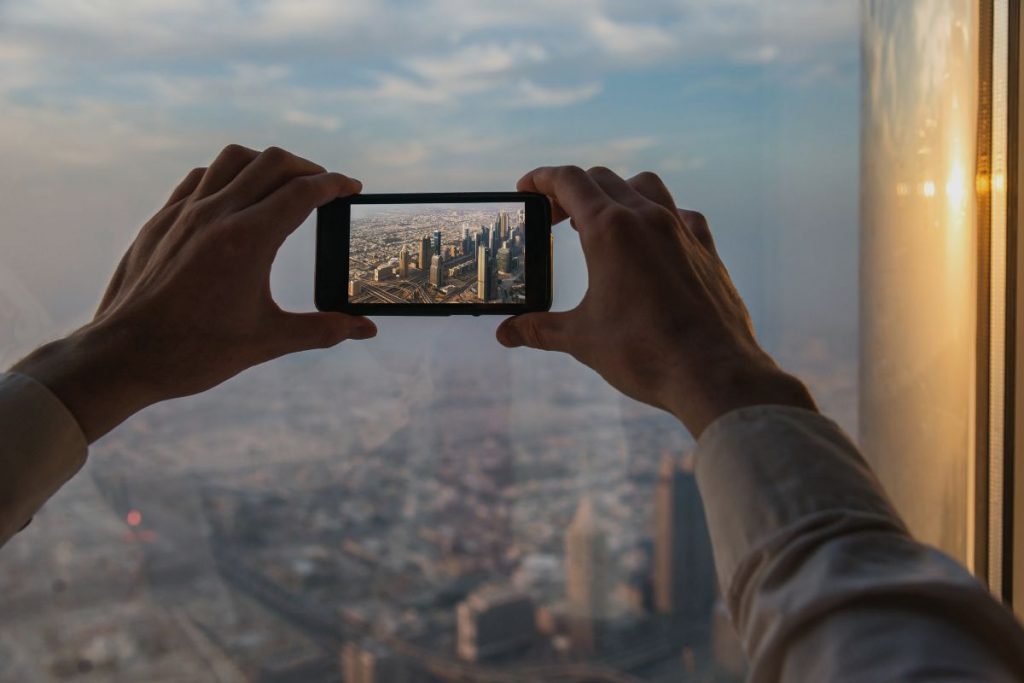
Photography Basics
Understanding the Basics
Photography basics are primary knowledge that photographers (amateur or professionals) need to have to enable them to take nice shots and develop their skills.
Listed below are some basics of photography:
- Aperture: This is an adjustable opening in the lens that controls the amount of light that enters the camera. A deeper depth of field results from a smaller aperture (bigger f-number), which enables less light to enter the camera, while a shallow depth of field is produced by a wider aperture (smaller f-number).
- Shutter speed: This is the length of time that the camera’s shutter is open, and it determines how long the film or image sensor is exposed to light. The faster the shutter speed, the lower the amount of light that reaches the film or image sensor. The slower the shutter speed, the more light that gets to the film.
- ISO: This is a measure of a film or image sensor’s sensitivity to light. If the ISO number is greater, the film or image sensor will be more sensitive to light and require less exposure, but if the ISO value is lower, the film or image sensor will be less sensitive to light and require more exposure.
- White balance: This is the process of adjusting the colours in an image to accurately represent the colours of the scene being photographed.
- Composition: Composition is the arrangement of elements within the frame of the photograph.
- Metering: Metering is how your camera evaluates the light of a scene to determine the correct shutter speed, aperture, or ISO.
- Focusing: Focusing happens either automatically or manually. Automatic focus, or autofocus, is when the camera system drives a motor to move elements in your lens to change focus. To focus manually, you need to turn a ring or similar mechanism on the lens instead.
How do these affect smartphone photography?
The major difference between the actual photo camera and a smartphone is the technicality in terms of handling.
Other elements do not necessarily serve as the basics of photography, but they play a part in smartphone photography.
- Lens quality: The quality of the lens on a smartphone can significantly impact the sharpness and overall quality of the photos.
- Sensor size: A larger sensor size allows for more light to be captured, which gives better low-light performance and improved image quality.
- Aperture: controls the amount of light that enters the lens. A wider aperture allows for more light to enter, which can improve low-light performance.
- Shutter speed: determines how long the camera’s sensor is exposed to light. A faster shutter speed can freeze fast-moving subjects and reduce blur, while a slower shutter speed can create a blurred effect for artistic purposes.
- ISO: A higher ISO can improve low light performance, but it can also introduce noise (graininess) into the image.
- Image stabilisation: The camera can shake while handling. Image stabilisation technology helps to reduce blur caused by camera shakes or movement.
- Software: Many smartphones have built-in software that can automatically adjust settings such as exposure and white balance to improve the quality of the photo.
- Lighting: Natural light is generally the best for taking photos, but smartphone cameras have improved significantly in recent years and can now produce good results in low light as well.
- Composition: The way the photo is composed can greatly impact its overall aesthetic and outlook. Applying elements such as the rule of thirds, leading lines, and framing can all be used to create visually appealing photos.
- Editing: After the photo has been taken, editing tools such as cropping, adjusting exposure and colour balance, and applying filters can help to further improve the quality of the photo.
- White balance: Selecting the right white balance setting will eliminate unsightly colour casts. This will result in photos with accurate colours, where your whites appear white as opposed to yellow, orange, or blue.

Exploring the shooting Modes and Features Offered By Different Smartphones
- Samsung Galaxy S22 Ultra
- Auto mode: This is the default shooting mode, which automatically adjusts the camera settings to capture the best possible image in the current lighting conditions.
- Pro mode: This mode allows you to manually adjust the camera settings, such as the ISO, exposure, white balance, and focus, to achieve the desired result.
- Night mode: This mode is designed to help you capture clear, detailed photos in low-light conditions.
- Live Focus mode: This mode allows you to adjust the level of background blur in your photos, creating a bokeh effect.
- Super Slow-mo: This mode allows you to capture slow-motion videos at up to 960 frames per second.
- Hyperlapse mode: This mode allows you to create time-lapse videos by capturing a series of photos at set intervals and stitching them together.
- Food mode: This mode is specifically designed for capturing food photos and includes features like a customisable white balance setting and a “beauty” filter to make the food look more appetising.
- Panorama: This mode allows you to capture wide, panoramic photos by sweeping the camera across the scene.
- Pro Video: This mode allows you to manually adjust the camera settings while shooting video, giving you more control over the final result.
- Single Take mode: This mode captures a series of photos and videos using different camera settings and AI algorithms and then suggests a selection of the best shots for you to choose from.
- Google Pixel 7 Pro
- Auto: This is the default shooting mode and is suitable for most situations. The camera automatically adjusts the settings to capture the best possible image.
- Night Sight: This mode is designed for low-light conditions and allows you to capture clear and detailed photos in dark environments.
- Portrait: This mode allows you to capture photos with a blurred background, making the subject stand out.
- Panorama: This mode allows you to capture wide, panoramic photos by sweeping the camera across the scene.
- Photo Sphere: This mode allows you to capture 360-degree photos, allowing you to view the scene from all angles.
- Playground: This mode lets you add fun stickers and 3D characters to your photos.
- Cinematic Pan: This mode captures smooth, sweeping panning shots, giving your videos a cinematic look.
- Slow Motion: This mode allows you to capture slow-motion videos by shooting at a high frame rate.
- Time Lapse: This mode allows you to capture a series of photos at set intervals, creating a time-lapse video when played back.
- Astrophotography: This mode is designed for capturing photos of the night sky and is available in Night Sight mode.
- Apple iPhone 14 Pro
- Auto mode: This is the default shooting mode that allows the camera to adjust settings automatically based on the lighting and scene.
- Portrait mode: This mode allows you to take photos with a blurred background (also known as bokeh) to create a more professional-looking photo.
- Night mode: This mode allows you to take photos in low light conditions without a flash.
- Panorama: This mode allows you to capture wide, panoramic photos by sweeping the camera across the scene.
- Slow-mo: This mode allows you to capture slow-motion video by shooting at a higher frame rate.
- Time-lapse: This mode allows you to create a video that appears to be moving faster than normal by capturing photos at a lower frame rate.
- HDR (High Dynamic Range): This mode captures multiple exposures at different levels of brightness and combines them to create a more balanced, high-contrast photo.
- Live Photos: This mode captures a brief video clip along with a still photo, allowing you to add motion to your images.
- ProRAW: This mode allows you to capture photos in the RAW format, which gives you more control over the final image in post-processing.
- Deep Fusion: This mode uses machine learning to improve image quality by combining multiple exposures to reduce noise and enhance detail.
- Xiaomi 12 Pro
- Auto: This is the default shooting mode and is suitable for most situations. The camera will automatically adjust the settings to capture the best possible image or video.
- Pro: This shooting mode gives you more control over the camera settings, such as the ISO, white balance, and focus. This mode is suitable for more experienced photographers who want to fine-tune their shots.
- Night: This mode is designed to help you capture clear and detailed images in low-light conditions.
- Portrait: This mode is designed to capture images with a shallow depth of field, which can help to create a more artistic and professional-looking image.
- Panorama: This mode allows you to capture a wide, panoramic image by stitching together multiple photos taken as you move the camera horizontally or vertically.
- Video: This mode allows you to capture video footage. The camera has several video recording options, including the ability to shoot in 4K resolution and slow motion.
- Time-lapse: This mode allows you to capture a series of images over a while, which can then be played back at a faster speed to create a time-lapse video.
- Photo: This mode is designed for capturing still images. It includes several options, such as the ability to adjust the exposure, ISO, and white balance.
- Live: This mode allows you to capture and share live videos in real time. It is similar to video mode, but the footage is streamed live to your followers or viewers.
- Document Scan: This mode allows you to capture and save images of documents or other flat objects. It can automatically detect the edges of the document and adjust the perspective to create a clear and legible image.

Accessories
There are many accessories available that can enhance the quality and versatility of your smartphone photography.
Some of the most common accessories for smartphone photography include:
- Tripod
- Lens attachments
- External flash
- Remote shutter release
- Filters
- Cases and grips
- Monopods
- Selfie stick
- Grip and stand
- Microphone
- LED light
- Gimbals
- Lenses
- Bags and cases
- Software
How Do They Enhance Smartphone Photography?
The above-listed accessories are useful in enhancing the functionality of photography smartphones; let’s take a look at some of their functions:
- Tripod: This can help keep your smartphone stable and reduce camera shake, which is especially useful for low-light or long-exposure shots.
- Lens attachments: you can give your smartphone different focal lengths, such as wide-angle or telephoto, or add special effects like fish eye or macro.
- External flash: This can be helpful in low-light situations or when you want to add some extra light to a scene. Many external flashes are designed to attach to the top of your smartphone.
- Remote shutter release: This is a handy accessory if you want to take photos without touching the smartphone. A remote shutter release can be especially useful for taking self-portraits or group shots.
- Cases and grips: These can help protect your smartphone from damage and provide a more secure and comfortable grip while taking photos.
- Monopod: A monopod is a type of handheld support that can help steady your smartphone while taking photos. It is especially useful for long exposures or action shots.
- Selfie stick: allows you to extend the reach of your smartphone’s camera. It makes taking self-portraits easier by covering a wider reach.
- Grip and Stand: This provides a secure grip on your smartphone and also functions as a stand, allowing you to set your phone up for hands-free photos or videos.
- Microphone: This helps improve the audio quality in the case of video shoots. There are many options available, including clip-on and shotgun microphones.
- LED light: can be a helpful accessory to improve lighting situations in a shooting scene. There are many options available, including small, portable lights that can be easily attached to your smartphone.
- Gimbals: A gimbal is a type of stabilising mount that can help smooth out camera movements and produce steadier video footage. Many gimbals are designed to hold smartphones.
- Lenses: In addition to lens attachments, there are also standalone lenses available for smartphones that can give you more flexibility and creative options. These can include wide-angle lenses, telephoto lenses, and speciality lenses like fish eye or macro.
- Filters: There are many types of filters available for smartphone photography. Some of these are UV filters, polarising filters, and neutral density filters. They can be used to reduce glare, enhance colours, or balance the exposure of a photo.
- Bags and cases: play a big function for your smartphone, especially on a shooting trip. There are many options available, including cases with built-in pockets and compartments for storing other accessories.
- Software: There are quite a number of software for photo editing apps, photo management apps, and camera app replacements. These can help you improve the quality and creativity of your photos.
Recommendations
Camera specifications for smartphones vary between smartphone brands and models, and this influences the choice and needs of the users.
Some vital factors to consider as a smartphone photographer are:
- Camera quality: If you are into photography, then a smartphone with a high-quality camera that is capable of capturing detailed, well-exposed photos comes greatly recommended.
- Manual controls: Many smartphone cameras offer manual controls, such as the ability to adjust the ISO, aperture, and shutter speed. These controls can be helpful for photographers who want to have more control over their photos.
- Storage: This will allow you to keep all of your photos on your phone, rather than having to constantly transfer them to a computer or other device.
- Durability: While planning to take your smartphone with you on adventures or in rugged environments, you may want to consider a model that is built to withstand rough treatment. Some smartphones are more durable than others, with features like water-resistant construction or rugged exteriors.
- Editing features: Editing features allow you to adjust the colour, contrast, and other aspects of your photos. If you’re planning to do a lot of editing on your phone, you may want to consider a model with robust editing tools.
Smartphone with the Best Balance of Features
The Samsung Galaxy S22 Ultra stands out from the competition despite the fact that there are many smartphones on the market that are excellent for taking pictures. This is thanks to its quad rear camera arrangement, which provides depth, clarity, and detail in each picture you take.
Its selfie camera is definitely one of the biggest selfie cameras with 40MP. The Samsung Galaxy S22 Ultra pushes productivity, power, and photography to the utmost to satisfy the most demanding photography lovers.
Recommendations for the best smartphone for photography
Based on the features they possess, especially camera and display specifications, these smartphones are the best for photography:
- Samsung Galaxy S22 Ultra
- Google Pixel 7 Pro
- Apple iPhone 14 Pro
- Apple iPhone 14 Pro Max
- Xiaomi 12s Ultra
Conclusion
In conclusion, the idea of smartphone photography is gradually shaping the creative industry. In reality, you do not need a traditional camera to be able to take images with clear quality. Today, there are several phones that come packed with top-notch features that enable photography lovers to snap clear and steady images directly from their phones.
